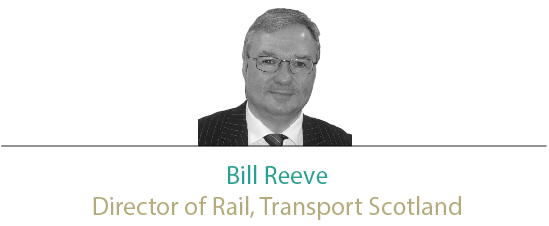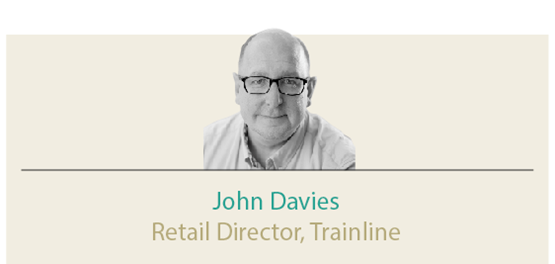
In Scotland, every ScotRail station is now equipped for ITSO smartcards. Season tickets and anytime and off-peak singles and returns are available across the whole network. Carnet-style smart flexi-passes have been launched. And ITSO through Android phone is now in pilot use.
Smart ticketing is a devolved matter for the Scottish Government, delivered through its agency (Transport Scotland) in partnership with our franchise (ScotRail) and other public transport operators.
Smart ticketing on rail, and indeed on all public transport, is overdue. Outside London, passengers expect smart ticketing now, and frankly don’t understand why it is not in place already. And politicians sense that mood, and share the frustration.
But smart ticketing is hard. The article suggests technology is not the problem, but practical experience suggests otherwise. Add to that the challenge of a multi-operator environment without consensus as to customer proposition or commercial model, and it is no wonder that the NAO and others have observed slow progress. In my experience, making smart ticketing work is among the most difficult challenges I have tackled. But it must be made to work, because otherwise passenger frustration will grow, public transport integration will be constrained, and opportunities for new customer relationship management will be missed.
To make smart ticketing work there must be a clear vision and consistent commitment. The Scottish Government has had a published target since 2012: “That all journeys on Scotland’s bus, rail, ferry, subway and tram networks can be accessed using some form of smart ticketing.” The ScotRail franchise procurement was a major opportunity to deliver against that target, and so in a bid evaluation based on 65% price and 35% quality, 25% of those quality marks were available for smart and integrated ticketing. ITSO was specified to link with bus and subway plans, and the franchisee’s commitment was to deliver passenger uptake of smart ticketing - 60% of all ScotRail journeys by the end of year four. This has certainly concentrated minds.
The UK Secretary of State for Transport has now confirmed that TOCs in England and Wales should deliver smart ticketing to allow travel across the whole network. The target is to deliver smart season tickets, singles and returns on ITSO within two years (in essence similar to the Scottish system now). That’s the right approach, but it will be difficult. The article rightly identifies the challenge of installing smart-enabled ticket gates and machines. Other challenges may be less obvious, but I suggest these include:
- The capacity of the ticketing supply base to deliver on this scale and in these timescales in a reliable manner. A step-change in both quantity and quality will be needed.
- A significant staff engagement and training programme. Rail staff must have confidence in their understanding of the smart system, so they can really sell the advantages to passengers.
- Maintaining clarity of commitment - to a plan which delivers what is achievable today, while keeping open a development route to embrace future options. It is necessary to navigate between the Scylla of tantalising technologies and the Charybdis of an ossified system. There is much to be said for many courses, but little will be achieved if one course is not picked and pursued with a steady helm.

Today’s ticketing landscape sometimes appears more confusing than ever - a mixture of technologies and approaches being developed, and increasingly granular requirements from transport operators (rather than homogenised approaches). The inventory of fares and products available in the industry’s shop window risks becoming more (rather than less) bewildering as a result.
It is easy to be cynical, but there is much to be celebrated in the progress that is being made - although Trainline would like to see it being made much faster. The UK enjoys perhaps the world’s most mature and successful transit retailing system, as developed by Transport for London. It has become a trusted and dependable part of life in the capital. Does London provide a model for the rest of the UK?
Partly. Oyster and contactless Pay As You Go models work because both customer and transit provider engage in a trust model where the precise amount of travel value being consumed is either low in absolute terms, or clearly understood up-front.
But where the value of travel being purchased is greater, the need becomes greater for customers to understand how prices can vary. A passenger can travel from York to Newcastle for a range of prices between £6.50 and £60.50, for example, but everything depends on when they book, on which date and time they travel, by which operator, and in which class. These variables need to be clearly understood before travel.
Technology, especially when focused on consumer need, is hugely powerful. Of all the ticketing alternatives available, mobile appears to hold the answer to many of today’s conundrums. The core of this is the ubiquity of the smartphone - with a higher usage among rail customers than the population at large.
Mobile enables customers to browse, buy and have their travel entitlement delivered to their phone in just a few moments. Trainline has pioneered the growth and development of mobile in UK rail, and customers have responded positively. 45% of what Trainline sells is currently available as a mobile ticket, and we are working with the Rail Delivery Group and our TOC partners to extend this nationally in support of the Transport Secretary’s 2018 digital ticket objective. We are also jointly looking at the next phase of mobile - to enable phone-based contactless travel across the London network (and elsewhere).
80% of Trainline customers offered a mobile ticket take it, and 97% rate their experience as satisfied. Remarkably, our research shows mobile encourages customers to travel more than they did previously - by up to three times. This typically represents incremental, discretionary travel at off-peak times.
And so we see that, like London, if you make it easier for consumers to purchase then they start to buy more often. It results in a virtuous circle of focus on consumer need, developing increased satisfaction, and bringing commercial success for the industry.











